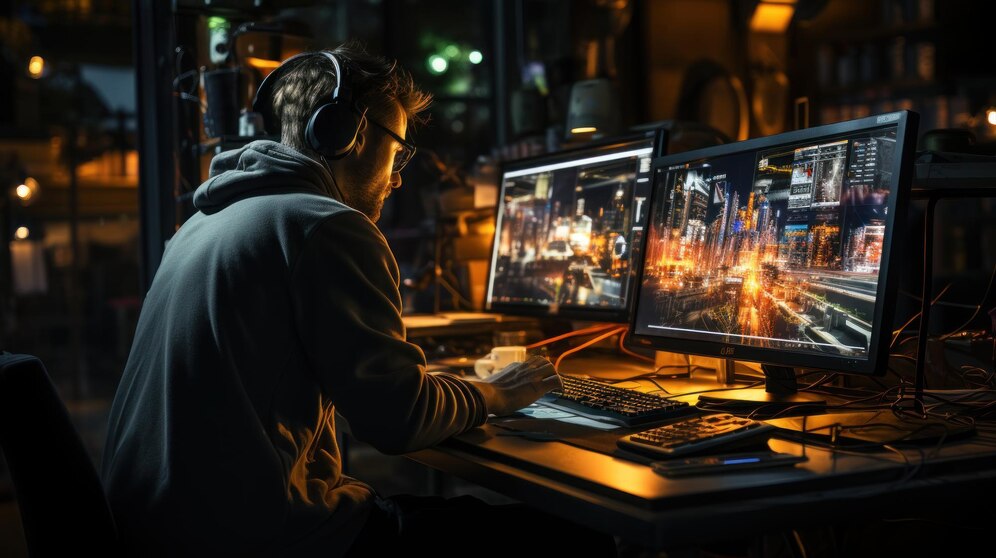The world of video animation is ever-evolving, shaped by advancements in technology, changing consumer preferences, and innovative storytelling techniques. As we move further into 2024, several trends are making a significant impact on how animation services are delivered and experienced. This article delves into the top six trends in video animation services this year, providing a comprehensive overview of each trend, its implications, and examples of how it is being utilized.
1. AI-Driven Animation
AI-driven animation tools, like those used by Film Division, have revolutionized video production by automating complex tasks, allowing animators to focus on creative innovation. Their advanced AI-powered services streamline the animation process while maintaining high-quality standards, ensuring exceptional results with less time and resources.
Implications
- Increased Productivity: Animators can produce high-quality animations faster and with fewer resources.
- Cost Efficiency: Reduced need for large teams and long production times can lower costs.
- Enhanced Creativity: With routine tasks automated, animators can explore more complex and creative storytelling techniques.
Examples
- DeepMotion: This AI-driven animation tool uses motion capture to create realistic animations from video footage, making the process quicker and more accurate.
- NVIDIA Omniverse: A platform that utilizes AI to assist in real-time collaboration and simulation, enhancing the efficiency of animation workflows.
2. Interactive and Immersive Experiences
The demand for more engaging and interactive content is driving the adoption of immersive animation techniques. Virtual Reality (VR), Augmented Reality (AR), and Mixed Reality (MR) are becoming integral parts of animation services, offering viewers a more interactive and participatory experience.
Implications
- Enhanced Engagement: Interactive animations can capture and hold viewers’ attention longer than traditional videos.
- New Storytelling Possibilities: Creators can experiment with non-linear narratives and user-driven stories.
- Broader Applications: Beyond entertainment, immersive animations are being used in education, training, marketing, and healthcare.
Examples
- Google ARCore: An AR platform that enables the creation of interactive animations that blend seamlessly with the real world.
- Quill by Smoothstep: A VR painting and animation tool that allows artists to create immersive 3D animations directly in VR.
3. Hybrid Animation Techniques
Hybrid animation combines traditional 2D and 3D animation techniques to create visually stunning and unique animations. This trend leverages the strengths of both styles, offering the depth and realism of 3D with the expressiveness and stylistic flexibility of 2D.
Implications
- Visual Appeal: Hybrid animations can stand out with their unique aesthetics, appealing to a wide range of audiences.
- Creative Flexibility: Animators have more tools and techniques at their disposal, allowing for more innovative storytelling.
- Cross-Platform Compatibility: Hybrid animations can be optimized for various platforms and devices, from smartphones to cinema screens.
Examples
- Spider-Man: Into the Spider-Verse: This film is a prime example of hybrid animation, combining 2D and 3D techniques to create a groundbreaking visual style.
- The Cuphead Show!: A Netflix series that blends hand-drawn 2D animation with 3D backgrounds and effects to create a retro yet modern aesthetic.
4. Real-Time Animation
Real-time animation technology is becoming increasingly popular, thanks to advancements in game engines like Unity and Unreal Engine. This technology allows for the creation of animations that can be rendered and manipulated in real-time, opening up new possibilities for interactive content and live broadcasts.
Implications
- Live Production: Real-time animation enables live broadcasts and events with animated characters and environments.
- Interactive Media: Audiences can interact with animated content in real-time, enhancing engagement and personalization.
- Faster Iterations: Animators can make changes and see the results instantly, speeding up the production process.
Examples
- Unreal Engine: Widely used in both gaming and animation, Unreal Engine’s real-time capabilities allow for dynamic and interactive animations.
- Adobe Character Animator: A tool that uses real-time motion capture to animate characters based on live performances.
5. Sustainable Animation Practices
As sustainability becomes a global priority, the animation industry is also seeking ways to reduce its environmental impact. Sustainable animation practices involve using eco-friendly materials, reducing energy consumption, and adopting green production techniques.
Implications
- Reduced Carbon Footprint: Sustainable practices help lower the environmental impact of animation production.
- Cost Savings: Energy-efficient processes and materials can reduce production costs in the long run.
- Positive Brand Image: Companies that adopt sustainable practices can enhance their reputation and appeal to environmentally conscious consumers.
Examples
- Toon Boom Harmony: This animation software supports paperless animation, reducing the need for physical materials.
- Renewable Energy Studios: Some studios are transitioning to renewable energy sources to power their production facilities.
6. Personalized Animation
Personalization is becoming a key trend in digital content, and animation is no exception. Personalized animations are tailored to individual viewers’ preferences and behaviors, offering a more engaging and relevant experience.
Implications
- Enhanced Viewer Engagement: Personalized content can resonate more deeply with viewers, increasing engagement and retention.
- Data-Driven Storytelling: Animators can use data analytics to understand audience preferences and create more targeted content.
- Customizable Experiences: Viewers can interact with and influence the narrative, making the content more immersive and personalized.
Examples
- Netflix: The streaming platform uses algorithms to personalize animated content recommendations for each user.
- Interactive Storytelling Apps: Apps like “Reigns: Game of Thrones” offer personalized narratives based on user choices.
Conclusion
The animation industry is undergoing a transformation, driven by technological advancements and changing consumer expectations. The six trends highlighted in this article—AI-driven animation, interactive and immersive experiences, hybrid animation techniques, real-time animation, sustainable practices, and personalized animation—are shaping the future of video animation services in 2024. As these trends continue to evolve, they will unlock new possibilities for creativity, engagement, and efficiency in the animation industry.
By staying ahead of these trends, animators, studios, and brands can create cutting-edge content that captivates audiences and meets the demands of a rapidly changing digital landscape. Whether through the use of AI to streamline production, the adoption of immersive technologies to enhance viewer engagement, or the implementation of sustainable practices to reduce environmental impact, the future of video animation is bright, innovative, and full of potential.







